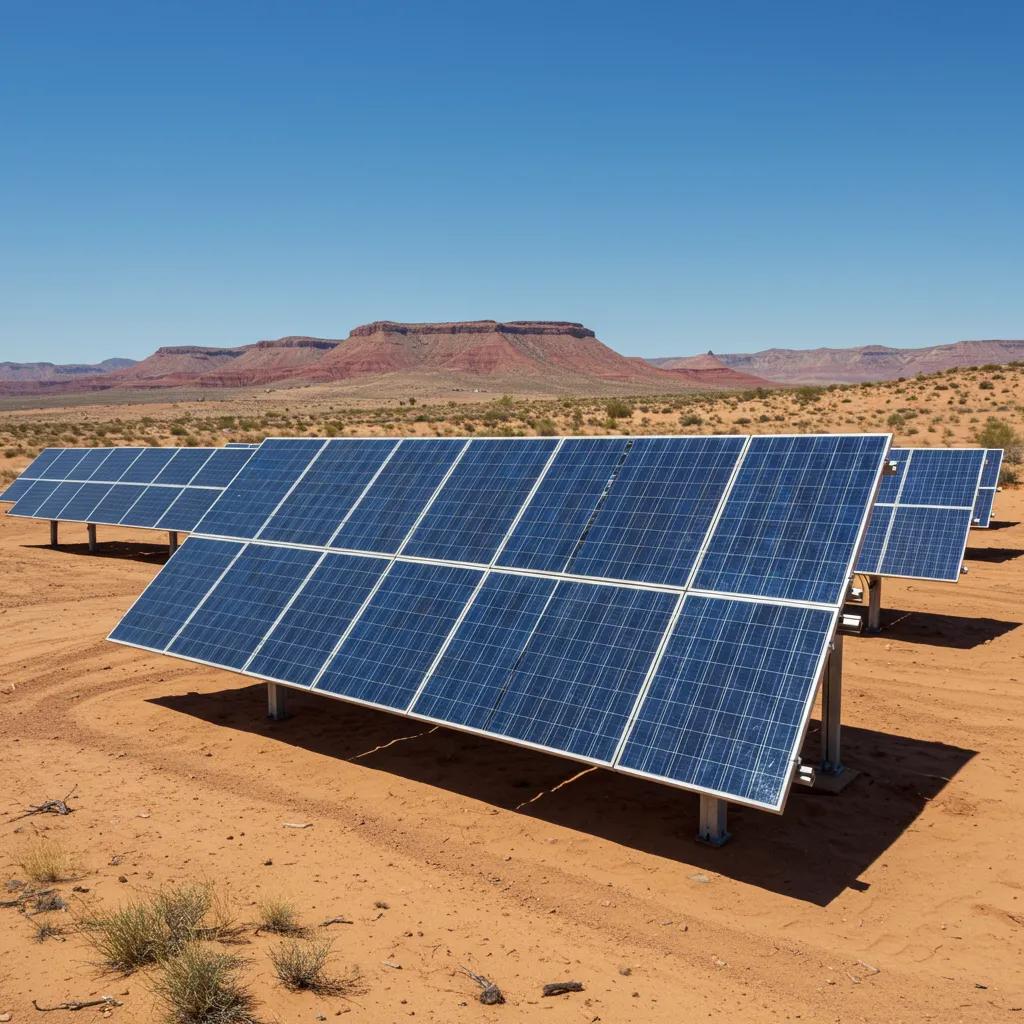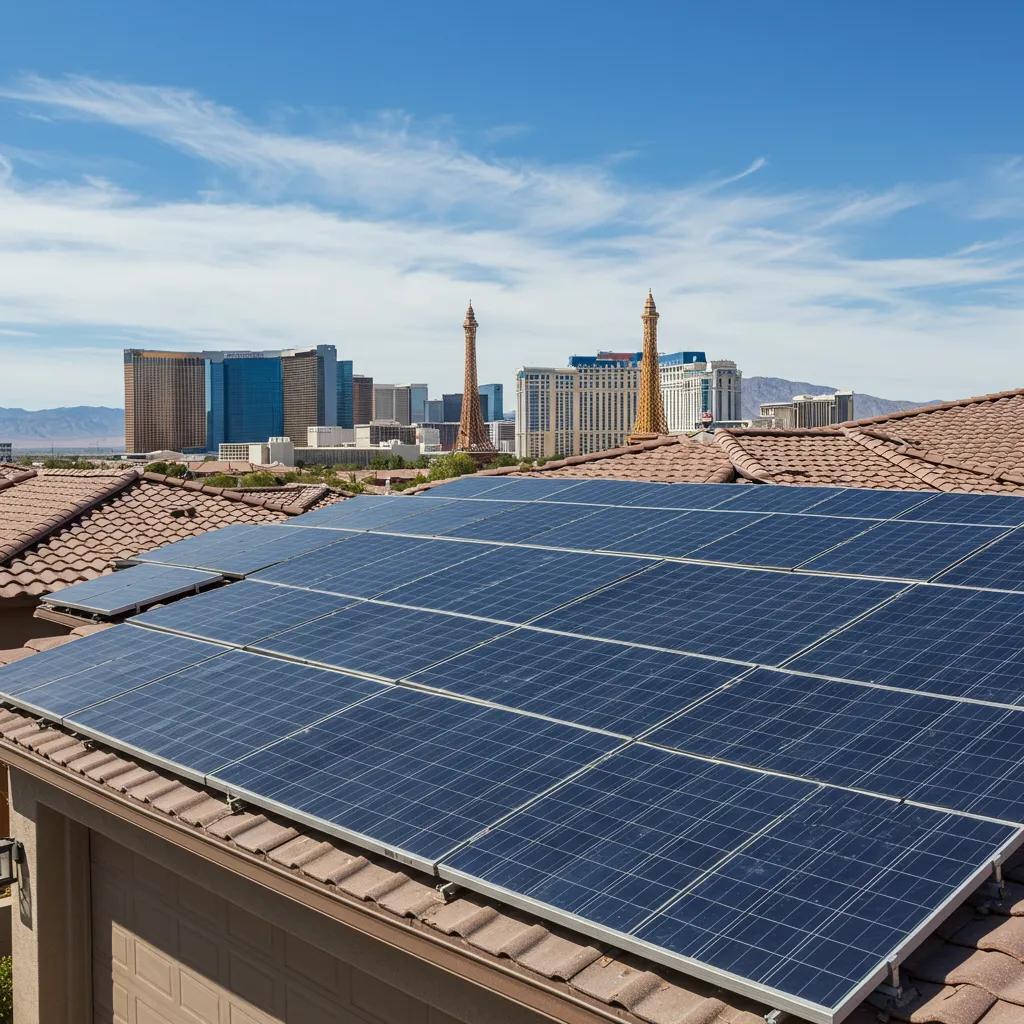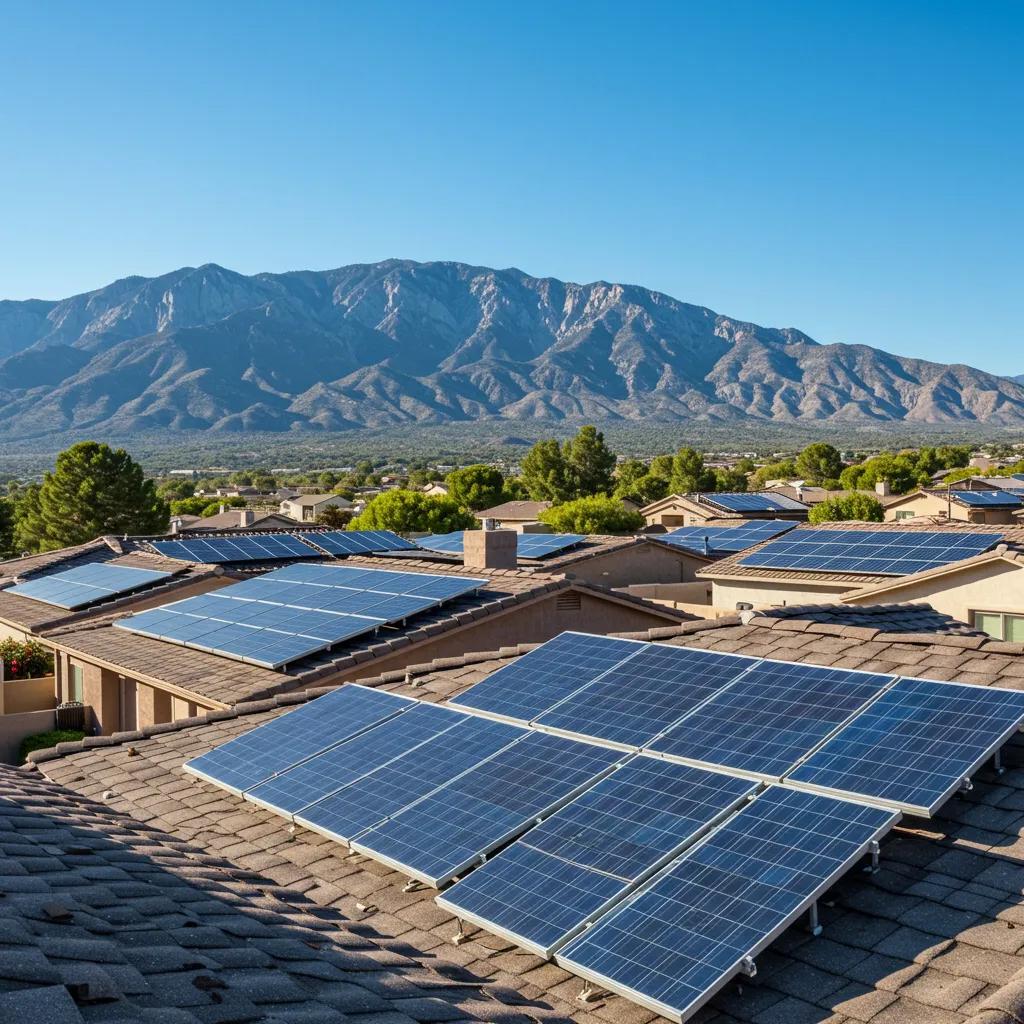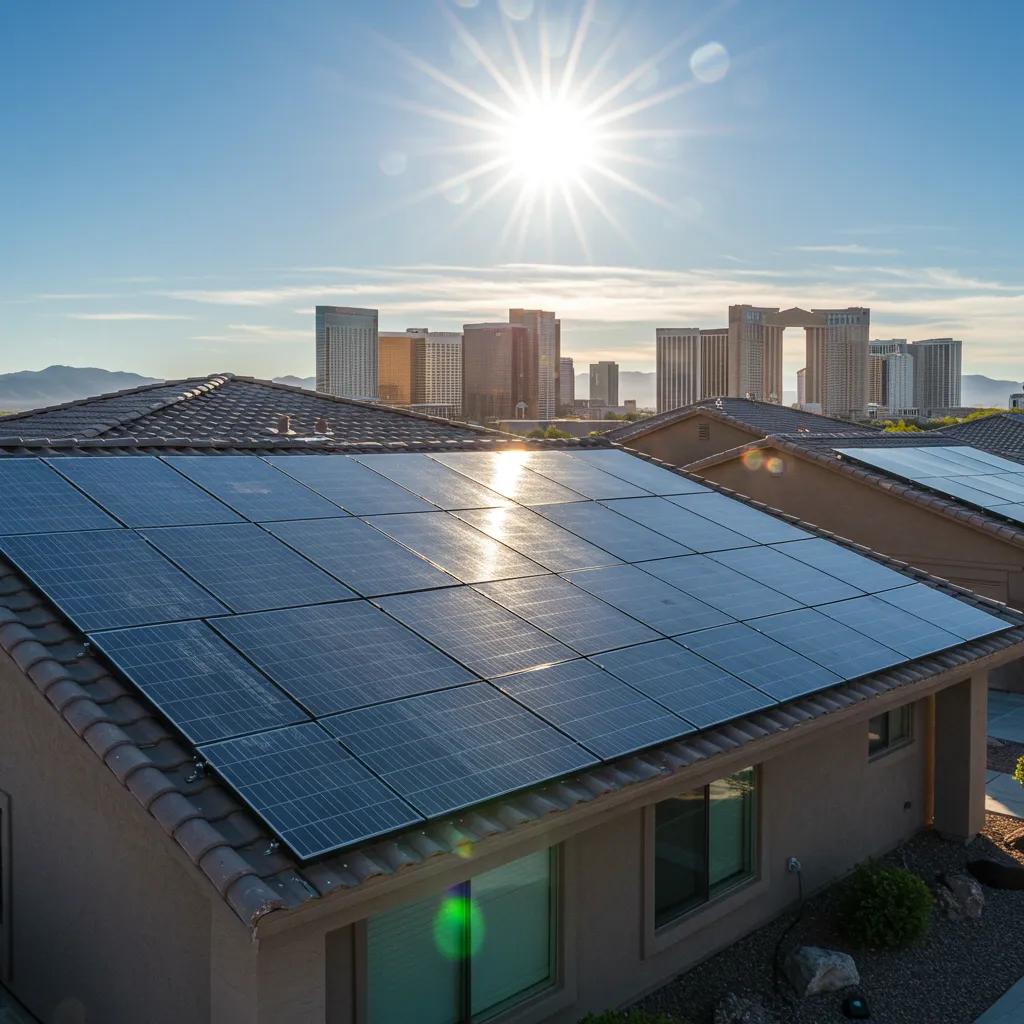Harnessing Tomorrow’s Energy: Innovations, Technologies, and Advantages for Las Vegas Homes and Businesses
Las Vegas boasts some of the nation’s most advantageous solar conditions, making the future of clean energy exceptionally relevant for local homeowners and businesses. This guide explores what the clean energy future entails, reviews emerging photovoltaic and storage technologies, and connects these advancements to the economic and environmental advantages for Las Vegas properties. Discover how perovskite and bifacial panels boost energy output, why modern batteries redefine resilience, which Nevada and federal incentives are crucial now, and how smart grids and AI enhance system performance. The guide also offers practical steps for commercial-scale projects and explains how to book a complimentary consultation to assess custom, comprehensive solar panel installation solutions. Throughout, the focus is on actionable technological insights, Nevada-specific policy guidance, and clear examples to help property owners evaluate savings, emissions reductions, and the long-term value of renewable energy investments.
What Are the Latest Innovations in Solar Energy Technology?
State-of-the-art solar technologies are enhancing conversion efficiency, reducing the overall cost of energy, and expanding the potential locations for system deployment. These innovations achieve this by modifying cell chemistry, capturing more light, improving system electronics, and integrating intelligent controls to maximize net energy production. The specific advantages include higher output per square foot, superior performance in high-irradiance desert environments, and reduced balance-of-system expenses through integrated inverters and racking. Understanding the timing and readiness of each innovation empowers homeowners to select upgrades that align with their lifecycle and return on investment objectives.
How Do Perovskite Solar Cells Improve Efficiency and Cost?
Perovskite solar cells represent a class of photovoltaic material capable of high light absorption and tunable bandgaps, leading to increased theoretical efficiency compared to many traditional silicon-only modules.
This technology leverages a crystal structure that facilitates robust photon-to-electron conversion and simpler manufacturing processes, potentially lowering production costs per watt.
In practical applications, perovskite layers combined with silicon in tandem cells can elevate module efficiencies while maintaining relatively modest increases in manufacturing complexity.
Current limitations involve long-term stability under heat and UV exposure, but recent research from 2024–2025 indicates significant improvements in encapsulation and lifespan, bringing them closer to commercial viability for rooftop enhancements.
Research into perovskite-silicon tandem solar cells highlights their potential for high efficiency but also points to ongoing challenges in stability that are crucial for commercialization.
Perovskite-Silicon Tandem Solar Cells: Stability and Commercialization Challenges
Currently, tandem solar cells (TSCs) integrating silicon (Si) bottom cells with wide-bandgap perovskite top cells offer the most promising combination of straightforward fabrication and high power conversion efficiency potential. Nevertheless, persistent challenges in perovskite stability significantly impact real-world energy yields, thereby hindering widespread commercialization. In light of this, we examine the influence of perovskite phase segregation and strain, novel issues encountered with perovskite films on textured surfaces and when employing TSC-specific electrode architectures, as well as the amplified challenges posed by current matching limitations. Furthermore, we analyze economic considerations and establish the lifetime energy yield required for perovskite-Si TSCs to achieve competitiveness with single-junction Si solar cells.
What Are Bifacial Solar Panels and Their Benefits in Sunny Climates?

Bifacial solar panels generate electricity from both their front and rear surfaces, capturing direct sunlight and reflected irradiance from surrounding surfaces, thereby increasing overall energy yield.
In bright, high-albedo environments like Las Vegas, with reflective surfaces and typical roof or ground-mount configurations, bifacial modules can provide measurable percentage gains over monofacial designs, especially when installed with optimal tilt and spacing.
This design reduces sensitivity to shading and can enhance seasonal energy production, although installers must consider mounting height, ground reflectivity, and racking expenses.
For many desert-focused installations, bifacial panels offer an excellent balance of yield and cost when combined with thorough site assessments.
Studies on bifacial solar modules confirm their enhanced energy yield in high-albedo environments, with research focusing on optimizing installation parameters for maximum performance.
Global Optimization and Performance of Bifacial Solar Modules
This paper presents a comprehensive study and optimization of bifacial solar modules, analyzing the influence of installation parameters on their performance. The bifacial gain for ground-mounted bifacial modules is investigated, alongside methods for optimizing energy yield. The research aims to offer insights into the effective deployment of bifacial solar technology.
How Is Photovoltaic Technology Evolving for Residential Use?
Residential photovoltaic technology is advancing through steady improvements in module efficiency, enhanced aesthetic integration, and more intelligent power electronics like microinverters and integrated optimizers.
These advancements minimize mismatch losses, improve per-panel monitoring capabilities, and allow for designs that accommodate complex roof layouts while maintaining high energy output.
Homeowners benefit from enhanced warranties, reduced soft costs due to integrated components, and quieter operation when systems utilize distributed inverters.
As PV modules and balance-of-system components continue to evolve, upgrade cycles are shifting towards targeted component replacements and performance monitoring rather than complete system overhauls, enabling homeowners to adopt new technologies incrementally over time.
Various solar innovations present installers and homeowners with a range of practical choices:
- Perovskite tandems: Achieve higher peak efficiency for limited roof space.
- Bifacial modules: Deliver increased annual yield in sites with high reflectivity.
- Integrated electronics: Provide better monitoring and reduce mismatch losses.
These choices naturally lead to evaluating energy storage and system-level integration, as higher and more variable generation profiles benefit from modern battery solutions and energy management systems.
This comparison clarifies that selecting the optimal module involves balancing efficiency, durability, and site-specific yield potential, guiding practical deployment decisions.
In practice, a professional assessment that quantifies expected production and lifecycle trade-offs helps homeowners prioritize technology selections and prepare for future integration of advanced panels.
After reviewing module-level innovations, the next critical area to consider is energy storage, which determines how excess generation translates into usable resilience and cost savings.
How Are Energy Storage Advancements Shaping Renewable Energy’s Future?
Energy storage transforms variable solar production into dependable, dispatchable energy by storing surplus generation and releasing it during peak demand or power outages. The mechanisms vary by battery chemistry—some excel in cycle life, others in energy density—but all support grid services like peak shaving, frequency response, and behind-the-meter resilience. For homeowners and businesses, storage amplifies the value of PV systems, enhances self-consumption, and can reduce demand charges or provide backup power. As the cost per kWh decreases and new chemistries mature, storage is becoming an integral part of future-ready solar designs.
What Types of Solar Battery Storage Are Available for Las Vegas Homes?

Home energy storage options include lithium-ion, emerging solid-state, and flow batteries, each offering distinct capacity, cycle life, and cost profiles that determine their suitability for a Las Vegas household. Lithium-ion batteries provide a compact form factor and favorable energy density with good cycle life for daily use, while flow batteries promise extended cycle life and straightforward capacity scaling but currently require more space and system complexity. Solid-state batteries aim for higher energy density and improved safety but are still in the early stages of commercial adoption. Typical sizing decisions are based on household consumption patterns, tolerance for outages, and budget constraints, with installers recommending packages that align with daily load profiles.
- Lithium-ion: High energy density, the mainstream choice for homes.
- Flow batteries: Offer long-duration potential and scalable capacity.
- Solid-state: An emerging technology with enhanced safety and density.
Selecting the appropriate chemistry and capacity requires accurate production forecasts and load analysis, which then informs how storage delivers grid and independence benefits.
This table illustrates that the choice of chemistry aligns with usage patterns and site constraints, and that current market deployments favor lithium-ion for residential and commercial integrations.
Understanding the types and sizing of batteries leads us to examine how storage enhances grid stability and energy independence at both community and household levels.
How Does Energy Storage Enhance Grid Stability and Energy Independence?
Storage provides demand-side flexibility by smoothing the output from rooftop PV systems, enabling peak shaving and reducing stress on distribution networks during high-load periods. The mechanism is twofold: batteries absorb excess midday generation and dispatch it during evening peaks, and aggregated distributed storage can offer grid services like frequency regulation through coordinated control. For individual properties, storage increases energy independence during power outages and reduces reliance on grid energy, improving resilience in climates with significant summer peaks. These benefits also support utility planning by providing predictable, controllable resources that complement centralized generation.
What Are the Cost and Benefits of Solar Battery Storage in Nevada?
The economics of battery storage in Nevada are influenced by upfront costs, local electricity rates, and available incentives; the long-term benefits include reduced energy expenses, avoided demand charges, and increased self-consumption. Recent price reductions for lithium-ion systems have shortened payback periods, while non-monetary advantages—resilience during outages and emissions avoidance—add significant value to the decision. Incentive programs and federal tax credits can materially impact payback calculations by lowering net installed costs. Homeowners considering storage should conduct scenario analyses comparing costs with and without incentives to determine the optimal capacity for their specific goals.
- Financial benefits: Lower peak charges, improved self-consumption.
- Resilience benefits: Backup power during outages and grid events.
- Environmental benefits: Increased renewable energy utilization, lower marginal emissions.
Determining cost-effectiveness requires matching production forecasts with battery dispatch strategies, which installers can model during the system design phase.
Following considerations for storage and dispatch, policy incentives play a crucial role in financial feasibility, so the next section details Nevada and federal programs that support adoption.
What Local and Federal Policies Support Renewable Energy Adoption in Nevada?
Policies and incentives at federal and state levels significantly alter the economics of solar projects by offering tax credits, net metering frameworks, and financing mechanisms that reduce upfront costs and improve payback periods. The underlying principle of many incentives is to lower the capital barrier for adopting renewable energy and to compensate—or not—for exported energy through net metering rules. For Nevada residents and businesses, understanding which incentives apply and how to qualify is essential for accurate ROI modeling and project financing.
How Do Federal Tax Credits and the Inflation Reduction Act Benefit Solar Installations?
Federal tax credits, such as those incorporated into recent clean energy legislation, reduce the taxable cost basis for qualifying solar and storage equipment, effectively lowering the net installation cost for eligible taxpayers.
Eligibility typically requires systems to meet domestic content and performance standards, and the taxpayer must have sufficient tax liability to claim the credits.
Practically, the credit percentage applied to a system’s cost can shorten payback periods and increase the net present value for both residential and commercial projects; meticulous documentation and installer support are often necessary to maximize these benefits.
What Are Nevada’s Net Metering Rules and State Solar Incentives?
Nevada’s net metering and interconnection rules dictate how exported energy is credited and whether time-of-use or export compensation applies, influencing the value of on-site generation.
The state regulatory framework establishes interconnection processes and potential buyback rates; eligibility typically involves system certification, interconnection application, and meter configuration.
Local incentive programs may offer rebates or financing supplements that further enhance project economics.
Homeowners should verify current state utility tariffs and interconnection procedures before finalizing system sizing.
To assist homeowners in navigating these programs, consider these three action steps:
- Gather utility bills: Compile 12 months of usage data to accurately model savings.
- Check eligibility: Confirm tax liability and property status for federal credits and local rebates.
- Apply and document: Submit required interconnection and incentive paperwork with installer assistance.
These steps prepare property owners to efficiently capture benefits and minimize administrative delays. Vegas Solar, LLC assists clients in navigating federal tax credits, net metering eligibility, and PACE program qualification during the complimentary consultation and throughout project planning, ensuring incentive documentation is completed accurately.
How Can Homeowners Qualify for Property Assessed Clean Energy Programs?
Property Assessed Clean Energy (PACE) programs enable property owners to finance energy upgrades through an assessment added to their property tax bills, spreading costs over many years and linking repayment to the property itself.
Qualification typically depends on property equity, participation in municipal programs, and adherence to local underwriting standards.
The practical outcome is improved cash flow for larger upgrades, although owners should understand the implications of liens and transferability upon sale.
Installers and lenders often collaborate to prepare the necessary documentation and guide homeowners through enrollment procedures during the project planning phase.
Understanding incentives and financing naturally leads to quantifying the economic and environmental benefits for local properties, which the next section addresses.
What Are the Economic and Environmental Benefits of Solar Energy in Las Vegas?
Solar energy provides immediate reductions in energy bills by offsetting grid purchases, generates long-term return on investment through avoided electricity costs, and lowers carbon emissions associated with fossil fuel generation.
The mechanism is straightforward: on-site generation replaces purchased kilowatt-hours, reducing monthly bills and, over time, delivering cumulative savings that often surpass the initial installation cost.
Environmental advantages include reduced CO₂ emissions and lower water intensity compared to thermal power generation, both critical factors in the Mojave Desert environment.
Quantifying these impacts helps homeowners and businesses justify investment decisions and measure their contributions to community decarbonization efforts.
How Does Solar Installation Reduce Energy Bills from Day One?
A commissioned solar array offsets on-site energy consumption, reducing the kilowatt-hours drawn from the utility and immediately reflecting as lower electricity bills, particularly under net metering or favorable export compensation arrangements.
The extent of this reduction depends on system production, household energy usage patterns, and the utility’s tariff structure.
For many Las Vegas homes, midday air conditioning demands align well with solar production, maximizing on-site use and delivering immediate savings.
Accurate production modeling and tariff-aware dispatch strategies ensure that expected bill reductions are realistic and sustainable.
This illustrative table demonstrates how system size scales savings and emissions reductions, guiding homeowners in selecting systems that align with their financial and environmental objectives.
In What Ways Does Solar Increase Property Value for Homeowners?
Solar installations can enhance property value by reducing ongoing energy costs for future owners and signaling energy-efficient building upgrades during appraisals and sales.
The impact varies depending on system ownership (owned systems typically add more value than leased systems), the quality of the installation, and the documentation of performance and warranties.
Appraisers and buyers are increasingly factoring energy cost savings into home valuations, especially in markets with high energy prices or significant solar adoption.
Proper documentation, warranty transfers, and recorded energy production increase the likelihood that value is realized during a sale.
How Does Solar Energy Contribute to Carbon Emission Reduction in the Mojave Desert?
Solar PV reduces local and regional fossil fuel generation by displacing grid-supplied kWhs that would otherwise come from fossil resources, cutting CO₂ emissions proportionally to the local grid’s emission factors.
The calculation involves multiplying the expected annual kWh production by the grid’s emissions per kWh to estimate the avoided tons of CO₂ per year.
Collectively, widespread rooftop and commercial solar deployment across the Mojave region contributes to regional decarbonization goals and reduces localized air pollutant burdens.
These reductions translate into quantifiable climate benefits for communities and ecosystems in arid regions.
What Role Does Water Conservation Play in Sustainable Solar Development?
Compared to thermoelectric power plants that require water for cooling, photovoltaic solar systems use minimal operational water, thereby conserving scarce water resources in arid regions like Las Vegas.
The mechanism is substitution: every kWh generated by PV reduces the demand for water-intensive thermal generation, resulting in measurable water savings over the system’s lifespan.
This advantage is particularly significant where water scarcity intersects with high seasonal electricity demand, making solar a dual-benefit choice for both energy and water resource resilience.
Quantifying water savings strengthens the environmental case for local solar adoption.
Following the discussion of economic and environmental benefits, commercial-scale solutions demonstrate how businesses can future-proof their operations; the next section explores this topic.
How Are Commercial Solar Solutions Future-Proofing Las Vegas Businesses?
Commercial solar solutions integrate larger PV arrays, energy management systems, and tailored financing structures to reduce operating expenses, enhance resilience, and support sustainability objectives. Mechanisms include reducing demand charges through strategic dispatch, generating power on-site to lower purchased energy costs, and integrating with battery systems for backup power and load shifting. Businesses benefit from predictable energy expenses, improved ESG (Environmental, Social, and Governance) metrics, and potential tax advantages. Well-designed commercial projects consider rooftop or ground-mount options, interconnection capacity, and seamless integration with building management systems.
What Are the Advantages of Commercial Solar Installation and Energy Management?
Commercial solar installations lower operating expenses by reducing purchased electricity and managing demand charges, provide resilience during grid disruptions, and support sustainability reporting and branding initiatives.
Energy management adds value by optimizing the use of on-site generation, scheduling high-intensity processes during peak solar production hours, and identifying efficiency opportunities through data analytics.
The benefits include reduced energy costs, diminished exposure to utility price volatility, and demonstrable emissions reductions that align with corporate sustainability goals. Case studies showcase multi-year paybacks that improve with tax incentives and smart financing options.
How Do Energy Management Systems Optimize Business Solar Use?
Energy Management Systems (EMS) optimize energy flows by controlling battery dispatch, shifting loads to lower-cost periods, and coordinating distributed resources for demand response events.
These systems analyze real-time production and consumption data, employ predictive algorithms to forecast energy needs, and implement automated control strategies to minimize peak grid draw.
The financial impact is often seen in reduced demand charges and improved net energy costs, while operational benefits include enhanced asset visibility and remote fault detection. For businesses, EMS integration transforms solar from a static asset into a dynamic operational tool.
What Financing Options Are Available for Commercial Solar Projects in Nevada?
Commercial projects can utilize a variety of financing mechanisms—capital purchase, loans, leases, power purchase agreements (PPAs), and tax-incentive-backed structures—each with distinct implications for cash flow, tax benefits, and balance sheet treatment.
The choice depends on a business’s preference for upfront capital expenditure versus long-term operational expenditure, its tax liability for utilizing credits, and its desire to own the asset for depreciation benefits.
Advisors often compare options using straightforward cash flow models that illustrate net present value and payback under various scenarios, helping businesses select the structure that best aligns with their financial strategy.
- Purchase: Offers maximum long-term savings and eligibility for tax credits.
- Lease/PPA: Involves lower upfront costs and benefits from third-party ownership.
- Loan: Allows ownership with financed capital, potentially offering tax advantages.
Selecting the appropriate financing option is linked to policy incentives and system design, which installers model during project planning and consultations.
For property owners ready to schedule, Vegas Solar, LLC can be contacted via the provided business phone number or email to arrange a complimentary consultation and initiate a customized system evaluation. This consultation is an opportunity to translate technological insights into a practical proposal for custom, full-service solar panel installation solutions and Solar Panel Installation that aligns with local incentives and site-specific conditions.
How Can Homeowners and Businesses Schedule a Free Solar Consultation with Vegas Solar, LLC?
A complimentary consultation with a local integrator begins with gathering usage data, assessing the property, reviewing available incentives, and presenting a customized proposal detailing system design, projected production, and financial projections. The consultation process includes an on-site or remote evaluation to identify ideal module types, potential for storage integration, and financing options tailored to the property. For readers ready to explore solar options, understanding the consultation process builds confidence and clarifies the next steps.
What Should You Expect During a Free Solar Consultation?
During a complimentary consultation, expect a site assessment that examines roof orientation, shading, structural considerations, and energy usage patterns; the consultant will review utility bills and discuss objectives such as resilience or bill reduction.
The process typically includes an incentives review to identify applicable federal credits and local programs, preliminary system sizing and production estimates, and a discussion of available equipment options and warranties.
The consultant will also outline the timelines for permitting, installation, and inspections.
This structured approach ensures that homeowners and businesses receive a clear proposal and an actionable roadmap.
How Does Vegas Solar Customize Full-Service Solar Panel Installation?
Vegas Solar, LLC delivers custom, full-service solar panel installation solutions that encompass consultation, design, permitting, construction, installation, and ongoing maintenance and monitoring as a comprehensive, turnkey offering.
The customization process starts with load and site assessments, progresses through engineered designs that consider module selection and racking, and continues with permit acquisition and coordinated installation schedules.
Post-installation, the company provides monitoring and repair services to ensure sustained production throughout the system’s lifecycle.
This end-to-end model simplifies the customer experience and centralizes accountability for project outcomes.
What Are Customer Success Stories and Testimonials from Las Vegas Clients?
Concise case summaries showcase measurable results such as reduced energy bills, production metrics, and CO₂ offsets from local installations, demonstrating how tailored system designs achieve client objectives.
Brief project descriptions outline the challenge (high bills or resilience needs), the technical solution (module type, system size, storage pairing), and the outcome (monthly savings and environmental impact).
These examples build trust by illustrating real-world achievements and clarify expectations for new clients.
Prospective clients can refer to these case examples when considering similar system sizes or performance goals.
For property owners ready to schedule, Vegas Solar, LLC can be contacted via the provided business phone number or email to arrange a complimentary consultation and begin a customized system evaluation.
What Is the Role of Smart Grids and AI in the Future of Renewable Energy?
Smart grids and AI enhance the integration of distributed renewable generation by enabling bidirectional energy and information flows, optimizing the dispatch of distributed resources, and coordinating demand response initiatives. The mechanisms involve advanced metering, predictive analytics, and automated controls that align local generation with grid requirements and customer priorities. For properties with solar installations, these tools increase overall system efficiency, reduce waste, and provide data-driven pathways for optimizing performance throughout the asset lifecycle. The combined effect is a more resilient, efficient, and adaptive energy system.
How Do Smart Grids Improve Energy Distribution and Efficiency?
Smart grids incorporate sensors, communication networks, and control systems across distribution networks to balance supply and demand in real time, thereby reducing energy losses and improving outage response times. By aggregating distributed resources like rooftop solar and batteries, utilities can smooth out peak loads and avoid costly infrastructure upgrades. For customers, smart grid features offer enhanced visibility into energy costs and introduce new programs that incentivize flexible consumption. Coordinated grid operation ultimately supports higher penetrations of clean energy while maintaining system reliability.
The integration of AI with smart grids is a key area of research for enhancing renewable energy efficiency, with studies exploring advanced techniques for optimization and forecasting.
AI-Driven Integration of Solar Energy and Smart Grids for Improved Efficiency
This paper provides a comprehensive analysis of AI-driven solar energy generation and its integration with smart grids, with the primary objective of enhancing renewable energy efficiency. The study investigates the application of advanced artificial intelligence techniques for optimizing solar power production, forecasting, and grid management. Machine learning algorithms, specifically Support Vector Regression (SVR) and Artificial Neural Networks (ANN), are evaluated for their efficacy in predicting solar irradiance and estimating photovoltaic (PV) system performance. The integration of AI within smart grids is explored, emphasizing its contributions to demand-side management, energy storage optimization, and grid stability control.
What Are the Benefits of AI-Driven Energy Monitoring and Predictive Maintenance?
AI-driven monitoring detects performance degradation and predicts component failures before they lead to downtime, utilizing patterns in production, temperature, and inverter telemetry to trigger proactive maintenance actions. These predictive capabilities reduce unplanned outages, extend equipment lifespan, and improve lifetime energy yield by keeping systems operating at peak performance. For system owners, AI tools translate into lower maintenance costs and higher net production, while installers benefit from remote diagnostics that expedite repairs and reduce service calls.
How Will IoT Devices Transform Residential and Commercial Solar Systems?
IoT sensors—including panel-level monitors, smart meters, and environmental sensors—provide granular data that enables precise control and sophisticated analytics for both residential and commercial systems. This data supports performance optimization, targeted maintenance, and customer-facing dashboards that demonstrate value in real time. Privacy and cybersecurity considerations must be addressed through secure design and robust data governance. As IoT adoption grows, the combined data ecosystem will facilitate more advanced energy management strategies and tighter coordination with smart grids and AI platforms.
This interconnected evolution of smart grids, AI, and IoT completes the vision of a clean energy future that is more efficient, resilient, and aligned with economic incentives. For property owners in Las Vegas, integrating these technologies with tailored system design and professional installation unlocks tangible savings and environmental benefits that will accrue for decades to come.




